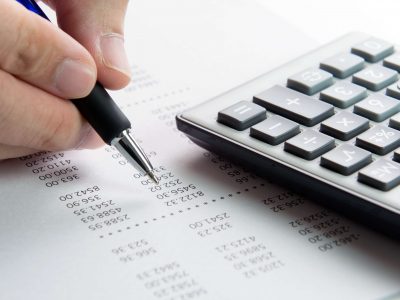
Finally, any gain or loss from the disposal transaction is recognized in the journal entry. This how to record the disposal of an asset is done by either debiting or crediting the gain or loss on disposal of assets account. If the sale results in a gain, as in the case where the machinery sold for $25,000 with a net book value of $20,000, a credit of $5,000 would be made to the gain on disposal account. Conversely, if the sale results in a loss, the loss on disposal account would be debited. This entry is vital for reflecting the financial impact of the disposal on the company’s income statement, where gains boost profits and losses reduce them. It ensures that the financial outcomes of asset disposals are transparently communicated to stakeholders.

How to Calculate Straight Line Depreciation
- On 1 January 2016, the motor vehicles account shows a balance of $79,300.
- The fair market value of pp&e is typically determined by an independent appraisal.
- For this, they must compute the difference between the asset’s cost and salvage value and divide the result by the asset’s useful life.
- Properly recording this event in financial statements ensures transparency and compliance with accounting standards, which is crucial for stakeholders who rely on accurate reporting to make informed decisions.
- If the asset is traded in, sold on credit, or destroyed (and an insurance claim is made), the account of the supplier of the new machine, the debtor, or the insurance company is debited.
- Since the cash proceeds ($1.5 million) are less than the carrying amount (i.e. $2.6 million), the disposal has resulted in a loss of $1.1 million ($2.6 million – $1.5 million).
In conclusion, a company can make fixed asset disposal for different reasons. Writing-off a fixed asset involves removing the asset from the financial books due to it no longer being useful or having any recoverable value. Fixed Assets are not revalued unless there has been a significant change in value shortly before they are closed. In this case, it might be better to revalue the Fixed Assets to show their new market values at the end of the period. recording transactions Most fixed non-current assets depreciate over time and need to be accounted for when recording the disposal of a non-current asset.

What is Fixed Assets Disposal and How to Record it?
This is a common situation when a fixed asset is being scrapped or given away because it is obsolete or no longer in use, and there is no resale market for it. In this case, reverse any accumulated depreciation and reverse the original asset cost. If the asset is fully depreciated, then that is the extent of the entry. When a company disposes of an asset, it must also provide disclosures in its financial statements that give stakeholders a clear understanding of the transaction. These disclosures typically include a description of the disposed asset, the disposal date, the method of disposal, and the financial effects of the transaction, such as the gain or loss recognized. This information is crucial for users of financial statements, as it provides context to the numbers reported in the financial statements and can influence investment and lending decisions.
How does depreciation on property differ from depreciation on other types of assets?
- Any remaining difference between the two is recognized as either a gain or a loss.
- Learn how to accurately record asset disposal journal entries and understand their impact on your financial statements.
- The articles and research support materials available on this site are educational and are not intended to be investment or tax advice.
- If the asset has components that are still valuable or usable, dismantling for parts can be an effective method.
When an asset is disposed of, all of the assets’ accumulated depreciation must be removed from the Accumulated Depreciation account with a debit entry. There are four accounts (discussed below) affected when writing off a fixed asset at disposal. When you write something off the books, accounts with normal debit balances are credited and accounts with normal credit balances are debited. It is ultimately realized through lower depreciation charges in future years because the asset is recorded at $61,000, rather than at its list price of $65,000.
Part 2: Your Current Nest Egg
The common denominator for all journal entries would be the recognition of a gain or loss. If you have a small business accounting software like QuickBooks Online, you can create disposal journal entries in QuickBooks Online’s journal module. This could include cash received or the fair market value of any non-cash consideration. If the machinery mentioned earlier is sold for $25,000, this amount needs to be documented in the journal entry. The difference between the book value and the sale proceeds will result in either a gain or a loss on disposal. In our example, selling the machinery for $25,000 when its book value is $20,000 results in a $5,000 gain.


When the net book value is taken out of the portfolio, the amount of the receipt of the eventual sale is entered into the company’s account lines. The disposal therefore simultaneously entails an exit and an entry in the balance sheet but in different lines. Let’s say you bought a business vehicle for $40,000 two years ago and the https://www.bookstime.com/ accumulated depreciation for the vehicle is $12,000. Understanding the meaning of asset disposal and write-off can be challenging for individuals new to accounting. That said, knowing the differences between the two concepts can help eliminate any confusion.
